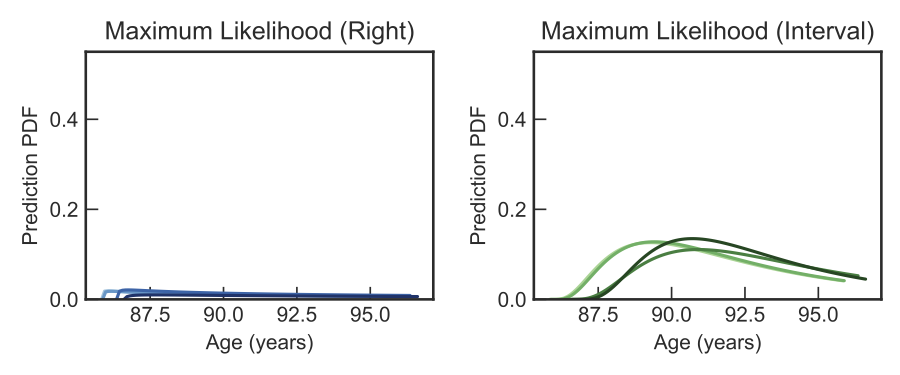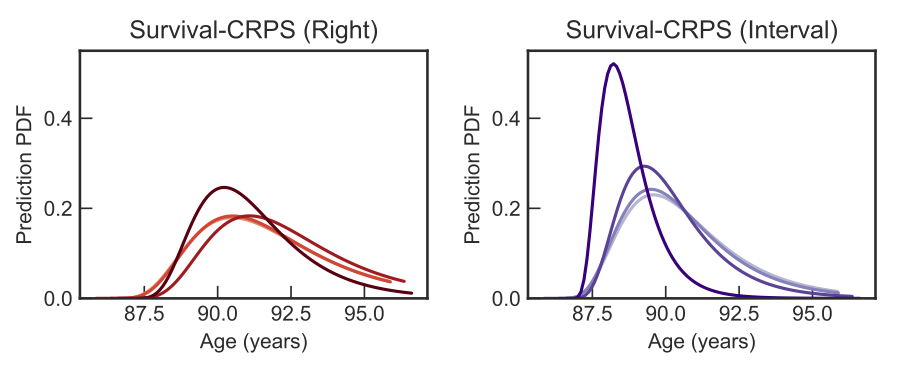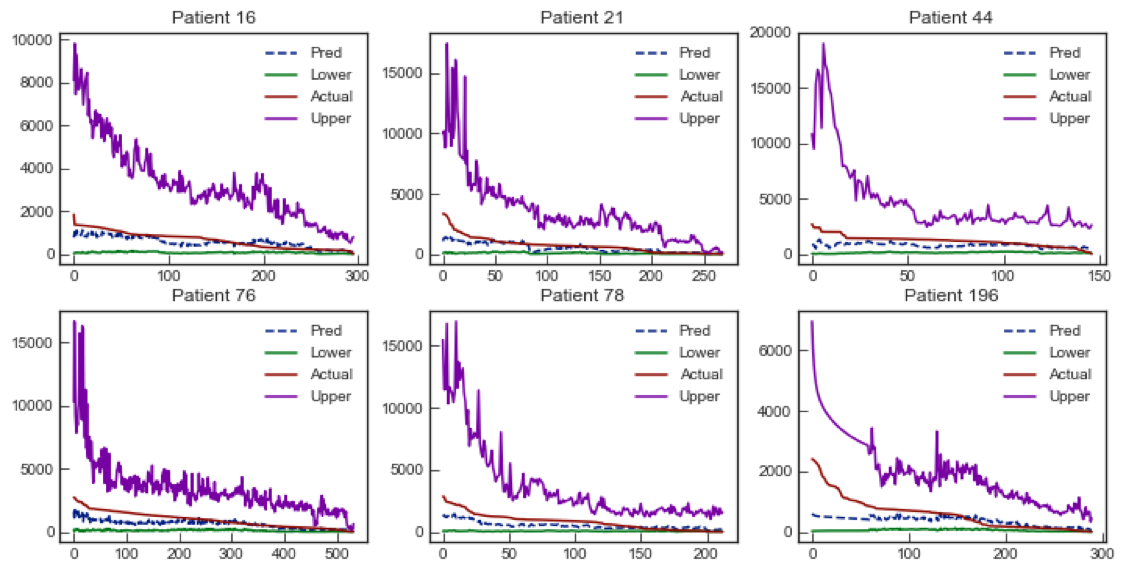We introduce two techniques for more confident forecasts.
Maximum Likelihood Estimation (MLE), the most common approach in machine learning, fails to work well for forecasting time to all-cause mortality with EHR data. This is because, in real world EHRs, the vast majority of the patients are alive. In low prevalence conditions, the mathematical properties of MLE tend to make survival forecasts that can be wildly unreasonable (for example, predicting the expected age-of-death to be many hundreds of years). Even though such forecasts are technically calibrated, this makes naive MLE based survival predictions practically unusable.
We present two independent techniques to improve the confidence of predictions in this scenario. First, we use our Survival-CRPS objective in place of MLE. Second, based on the fact that humans generally do not live past 120 years of age, we create Interval Censored variants of both Survival-CRPS and MLE. The two techniques independently, and jointly, improve the quality of survival predictions.
In this figure, we show examples of a patient's predicted distributions for age of death under different models. Repeated interactions (indicated by darker color) between the patient and the EHR yield more confident predictions of time of death.



